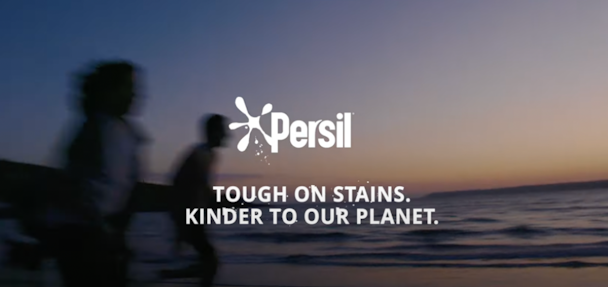Be warned, your sustainability billboards need more small print
Emma Jenkins, a strategist at Enviral, is tired of seeing unsubstantiated sustainability claims on billboards - and yes, that includes LinkedIn mock-ups. If they stand any hope of running, brands will have to get better at showing their working.

It’s not often I put my head above the parapet with a strong opinion. But I’m noticing more and more agencies sharing sustainability case studies with mock-ups of their beautiful work, which include hypothetical ads.
It’s time to address them.
As a messaging strategist for a purpose-driven creative agency, I spend my days writing copy for environmental campaigns that make people think and feel; I question everything I have written, triple-check guidelines, and write countless substantiation lines. Often, that means ruining my beautifully neat copy so that it complies with regulations.
So, seeing these hypothetical ‘billboards’ with beautiful designs and catchy text raises a few alarms. The fact that more agencies are prioritizing purpose-led campaigns is amazing. Still, with the ASA’s strict environmental messaging guidelines, many of these beautiful billboards with cute environmental one-liners and super clean messages would never make it in the wild.
I recently saw a billboard mock-up on LinkedIn that said the product offered a new way of doing things with “zero carbon” involved. It looked good, and the messaging was slick - but no substantiation or anything gave the audience more information about the product’s broader environmental impact. Did this sweeping claim consider the transport, the supply chain or broader business emissions? I doubt it.
Advertisement
I saw another that mentioned ‘Kind on the Planet’ - again, it looked great, but again, there was no substantiation - really kind to the planet? Compared with what? Is it actually benefiting our natural world, or is it just a little less damaging than its competitors? These important questions need to be considered before we slam these cute, tidy lines on hypothetical billboards and share them with the world. Any good copywriter can write these, but what makes the sustainability world so challenging is writing engaging, creative messaging that’s transparent, credible and free of greenwash.
Anyone in the sustainability comms world knows that the ASA has strict rules on words like ‘zero carbon’ and ‘carbon neutral’ - because these are not only greenwash but used as blanket terms without considering the broader impact of the product. General sweeping claims like this need substantiation.
The ASA says: “When making claims, businesses must consider the total impact of a product or service; claims can be misleading where they don’t reflect the overall impact or where they focus on one aspect of it but not another,” and when it comes to adding a substantiation line… “the less prominent any qualifying information is, and the further away it is from any main claim being made, the more likely the claim will mislead consumers.”
Heavy, right?
Advertisement
But this means that broad claims like this need a qualifying line, and unfortunately, this often means ugly text on your billboard. We’ve had countless designs go from neat and tidy to text walls to meet regulations; creative agencies must be showing this reality. Because what’s the good of these campaigns if they can’t live beyond LinkedIn?
As more creative agencies get into the sustainability space, with no knowledge of the regulations or obligations and no strict stance on greenwashing, we will only see this problem increase. Because the sustainability world isn’t just about making things look and sound amazing. It’s about making sure what you’re creating isn’t adding more fuel to the fire. It’s about the sublines, the substantiation lines and the disclaimers. It’s about ensuring you steer brands from greenwashing, don’t confuse or mislead customers, and you double-check and second-guess everything you create.
The more of these impossible billboards we all see, the more we give brands the impression that they can get away with saying the bare minimum regarding their environmental credentials, packaging everything they do in a neat, clever line, and slapping this on to billboards. It mitigates the need to substantiate and be transparent - which, in an already murky industry with confusion and complexity - only elevates the problem. And as an industry, we’re better than that.
Suggested newsletters for you
It’s the role of an agency to understand the Green Claims Code and other environmental regulations before they mock up beautiful billboards to understand the level of messaging they need. Greenwashing isn’t just for the big guys; every bit of poorly considered creative is chipping away at the incredible work being done by a genuinely purpose-driven worldwide world.
With billboard ads getting banned left, right and center, it’s our role as creatives to make sure what we’re showing our clients is the reality and that the work we’re producing is strengthening the fight against greenwash, not adding to it.
We’re facing the biggest crisis of our time - and it’s creatives that can help get us out of it.
Emma Jenkins is a copy and messaging strategist at Enviral. A purpose-driven creative helping brands create and communicate their sustainability stories.

